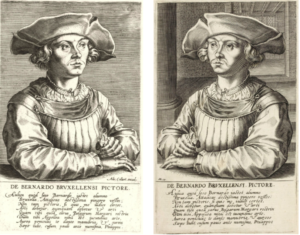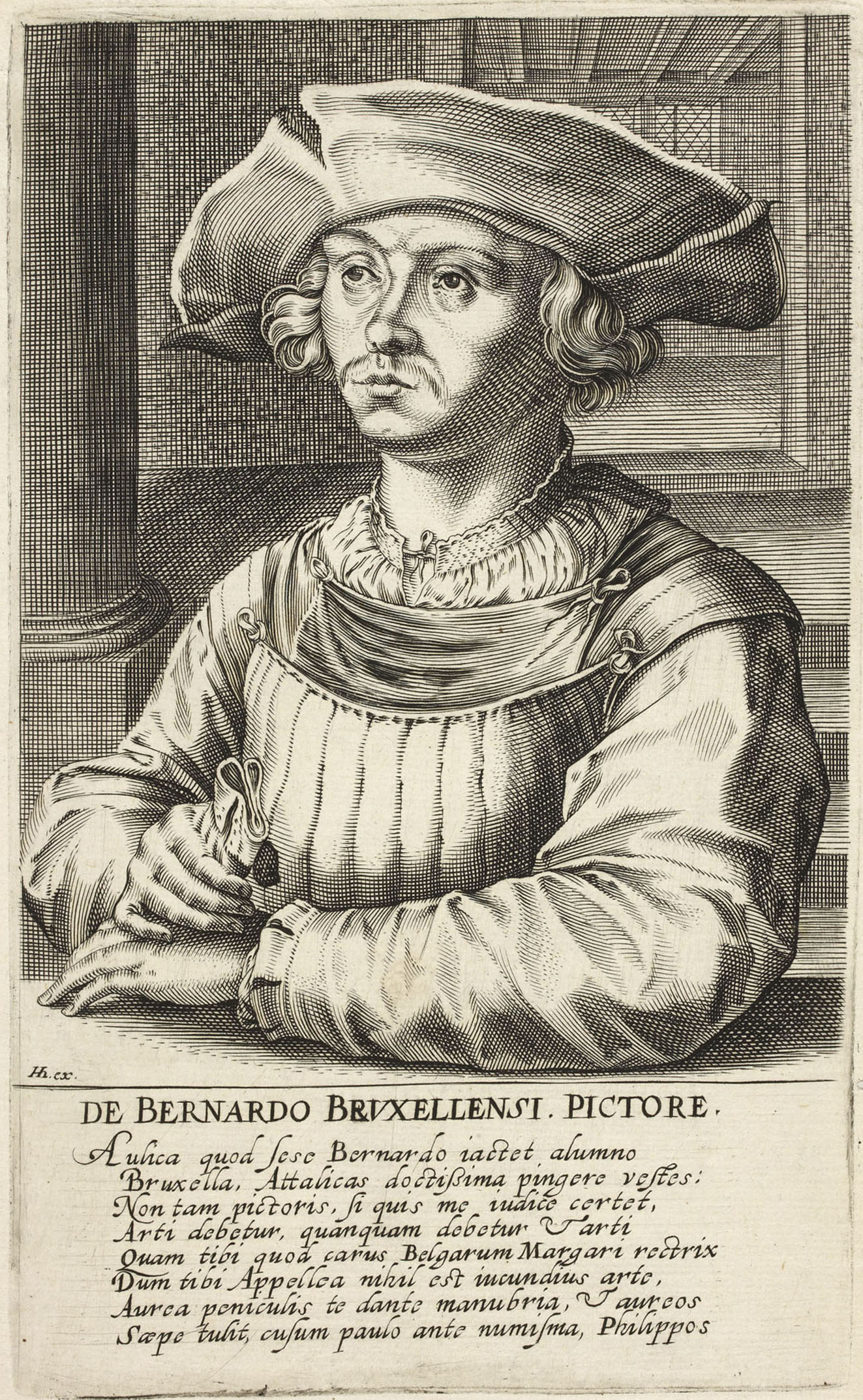Engraving, second state
Signed ‘Hh ex.’ by Hendrick Hondius
Copy in reverse direction to Cock 1572 engraved Pictorum
20.1 x 12.0 cm
Transcription of Inscription [Lampsonius]:
DE BERNARDO BRUXELLENSI. PICTORE.
Aulica quod sese Bernardo iactet alumno
Bruxella, Attalicas doctissima pingere vestes :
Non tam pictoris, si quis me iudice certet,
Arti debetur, quanquam debetur et arti
Quam tibi quod carus Belgarum Margari rectrix
Dum tibi Appellea nihil est iucundius arte,
Aurea peniculis te dante manubria, et aureos
Saepe tulit, cusum paulo ante numisma, Philippos
Translation of Inscription [Lampsonius]:
About Bernaert van Orley, painter.
That the Court of Brussels boasts of its nursling Bernaert, most skilled1 in painting Attalian2 garments, is not so much due (if anyone wants to argue while I am judging3) to the painter’s skill (although it is also due to his skill) as it is to [the fact] that he was dear to you, Margaret ruler of the Belgians, since nothing is more delightful to you than the art of Apelles. By your gift, he often got golden handles for his paintbrushes, and gold coins, in recently minted currency.
Hollstein 1994 no. 87
Karel Van Mander’s biography of Bernaert van Orley
Grove Art Online biography

View the 1572 print
View both prints side by side
Footnotes:
- I translate as if “doctissima” agrees with “Bernardus”. This is in fact impossible, as “doctissima” is feminine. It could agree with “aulica … Bruxella”, or be a vocative, addressing Margaret. But neither of these options makes much sense. Nor can it be corrected to “doctissimus” without spoiling the metre.
- The reference, which is found in classical poetry, is to Attalus III of Pergamum, credited with the invention of cloth of gold.
- “me iudice certet”. Cf. Virgil, Eclogue 4, 58, “mecum si iudice certet”.


